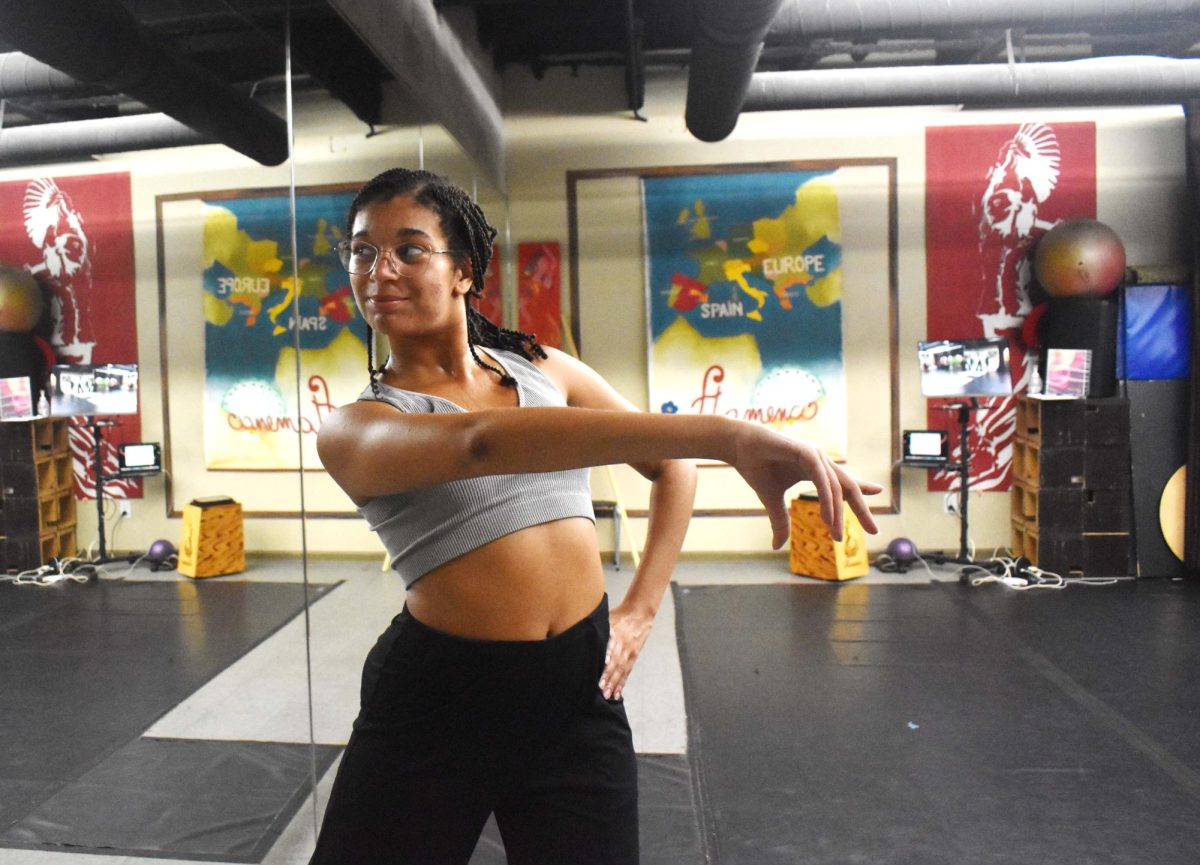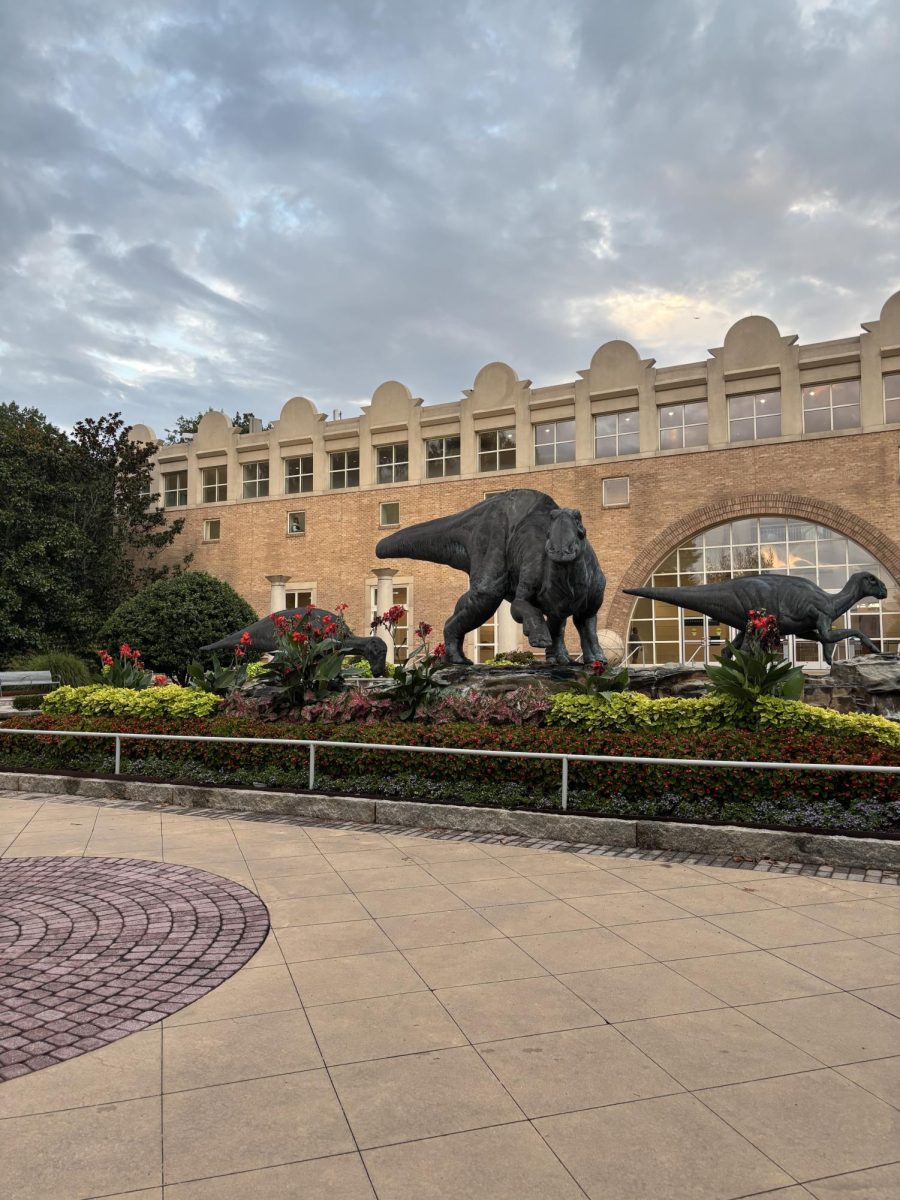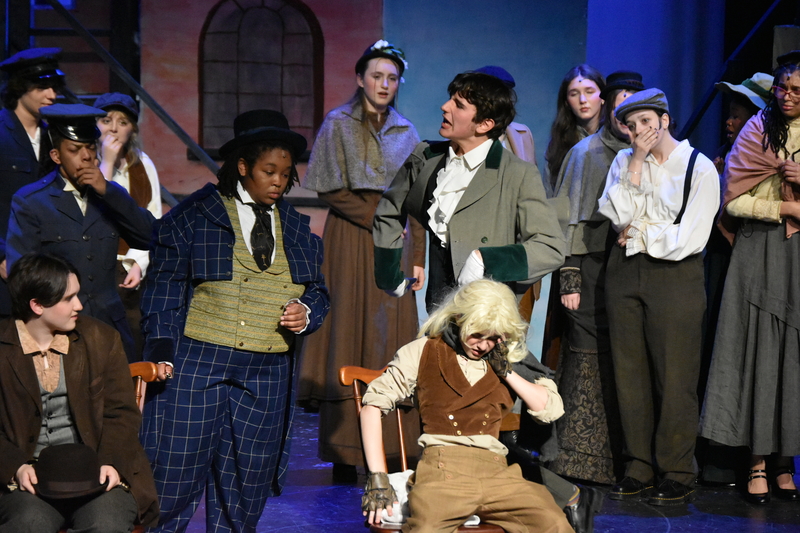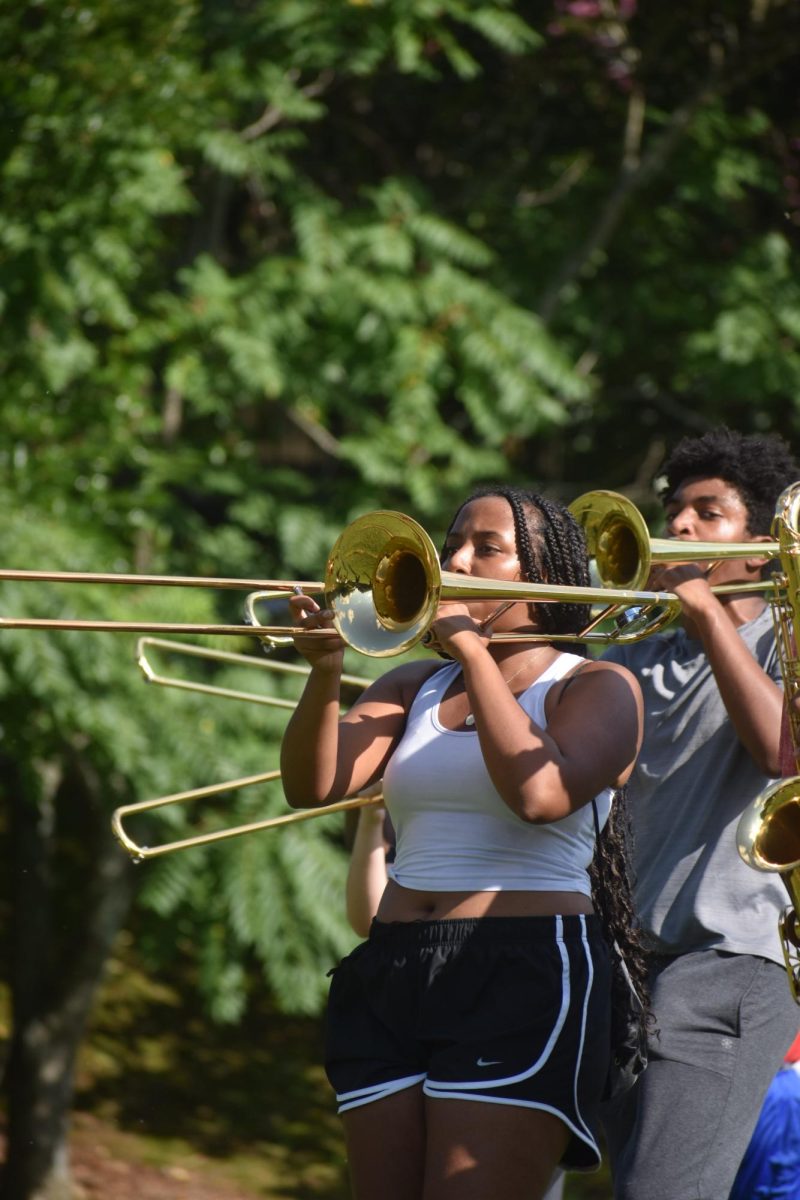
On Jan. 18, 2014 seven schools from the Atlanta area participated in a number of different on-site and off-site art competitions. In addition to the various art competitions, student writers from the seven schools sent up to two students to compete in the art review write-off competition. Here are the submissions in order by rank:
#1. J. D. Capelouto, Henry W. Grady High School:
Fire. Explosion. Debris. Soldiers flying through the air. Splashes. Smoke. Death. Then you realize it’s all toy pieces. A miniature recreation.
Sinking of the Delaba, by Paul Hagedorn, is a 2010 inkjet print photograph featured at the High Museum in Atlanta as part of the Lucinda W. Bunnen collection. It depicts the explosion and destruction of a toy warship, complete with tiny play soldiers, smoke, and water that could be found in a bathtub. Everything in the photo appears real at first, but as viewers look closer, they can make out smaller-than-life size and impeccable contrived detail.
Half of the photograph is blurry and out of focus which leaves most of it up to the imagination of the viewer – if this were a real ship, what was happening through the smoke? Behind the ship? Under the water? What would be on the soldiers’ faces as they were catapulted through the air, away from the fiery hell of the sinking ship, into the deep ice-cold water? Hagedorn made a bold choice by making the photo so inconceivable, yet we would miss so much if all we saw were the dark pieces of the ship.
The first question I asked myself when I saw this photo was, “What was the Delaba? Did it ever even exist?” Based on the name, the construction and the context, I don’t think it ever did. By taking this photograph, Hagedorn is exploring a child’s made-up perceptions of war – after playing the game Battleship, this is how most kids imagine the sinking of a fictional ship. Though it shows a tragic incident, Sinking of the Delaba conveys war as a “cool” scene that any child can make using toys.
I greatly appreciated this piece of Hagedorn’s work, as it twists imagination and opens our mind up to never-before thought-about concepts: children and how they see war, and how we encourage destruction and violence with today’s culture. Though it appears “cool” at first, Sinking of the Delaba speaks red-hot volumes to the effects modern life has on our children.

#2. Anna Truong, North Gwinnett High School:
Located in the heart of Atlanta at the High Museum of Art, The Art of the Louvre’s Tuileries Garden is a wondrous exhibit of works that reflect the elegance and allure of French culture. The Tuileries Garden was created by Catherine de Medici during the 16th century and has evolved into one of the most popular tourist attractions and frequented recreational locations in Paris. When entering the painting part of this exhibit, one can say that the art creates an atmosphere similar to what one would experience while strolling on a Parisian street. It is easy to sense the wonder and amazement shared by the multitude of visitors who are viewing the beautiful works. Some especially intriguing pieces invite those who have been examining them for several minutes to take one last affectionate glance before moving onto another one.
One such piece is Edouard Manet’s oil on canvas Children in the Tuileries Garden, which evokes nostalgic memories of enjoying oneself at the park on a beautiful spring day. Manet’s use of creams and whites and the doll-like appearances of his figures give the painting the aura of innocence. As a student preparing to apply to college, I can’t help but feel reminiscent of my carefree elementary school days when I had all the time in the world to play with my friends and take pleasure in my youth while looking at this painting.
In addition to paintings, sculptures from Paris are displayed in the courtyard and glass building right outside the lobby. For mythology enthusiasts like myself, the opportunity to view statutes of figures from Greek mythology is particularly enthralling. For example, Francois Joseph Bosio’s bronze sculpture Hercules Battling Achelous as Serpent depicts one of the most recognized mythological figures in fierce combat with a monstrous looking snake. However, this intense scene does not strike fear into the heart of its audience; rather, it elicits astonishment. Bosio’s craftsmanship of Hercules’ chiseled biceps and the serpent’s innumerable scales is remarkable and causes its viewers to circle the sculpture in order to examine every inch of his handiwork.
From Impressionist paintings to marble statuary, The Art of the Louvre’s Tuileries Garden has something for everyone whether you are an avid museum goer or a person looking for something to do in Atlanta. The High Museum of Art has compiled an abundance of artworks that reflects the lives of the Parisians, captures the beauty of the garden, and reveals the skill of the artists whose work is displayed there. Undoubtedly, The Art of the Louvre’s Tuileries Garden gives inspiration and a sense of wonder to all who visit it, similar to the way the garden has inspired the artists of this exhibit’s beautiful pieces and will continue to inspire individuals who embark to the iconic grounds of Paris.

#3. Jordon Rosier, Riverwood High School:
The Bunnen exhibit, featuring various photographs from Lucinda Bunnen’s personal collection, features photographs of varying mediums and subject matter. At first glance, you may question why Bunnen would even group all of these images together. However, upon closer examination, you will realize that Bunnen simply has taste for any photography. She appreciates the artistry behind both digital prints and bleached silver gelatin prints. She enjoys artwork that evokes both nostalgia and simple entertainment.
The two most impressive series of works are Nan Goldin’s series of long time friend “Cookie and Nicholas Nixon’s series entitled The Brown Sisters. Both series evoke a sense of nostalgia over a period of time, taking small glimpses of these people’s lives. In Goldin’s series, individual images are highly saturated with brightly pigmented colors, almost appearing to be enlarged polaroid images. Alone, the images may appear to be simple snapshots, rather than condensed artful photography. Though this may be a setback for photography critics, the images aren’t as structured as editorial images seen in magazines or advertisements. By employing the use of a “slice of life” style of shooting, viewers are given the sense that these images were meant to be in a personal photo album.
Unlike the mood of Goldin’s series, Nixon’s documentation of the Brown sisters comes off as more calculated, as if more planning was put into the shooting of the images. However, this does not remove their emotional value. We’re able to see a progression of a sisterly bond over more than 20 years. He arranges the sisters in the same order in each photograph. The option to choose black and white silver gelatin prints over cibachrome or dye infusion prints forces us to realize the surroundings of the sisters do not matter, instead we are to focus on the actual subject at hand (quite metaphorical): the sisters remain together whatever stages they may be in life.
Though the two series are of entirely different subject matters, they both flow seamlessly through the lives of the subjects. Happiness and sadness are both felt after looking through each series. Through the snapshots of their lives, viewers are able to see the beauty the artists saw when choosing to photograph them.

#4. Griffin Lansdowne, North Springs Charter High School:
In a brightly lit room with glass encompassing all but one wall lies the entrance to the High Museum’s Tuileries exhibition. Towering over all of the surrounding sculptures stands a great bronze sculpture, Hercules Battling Achelous. The piece is a mastery of anatomical male nude work; embracing its classical roots, as well as capturing the emotions of the French Romanticism movement. Created between 1768 and 1845, this piece’s creation lands flat in the Romantic Period’s prime.
In the late 18th century, the Romantic Era sparked in Europe, showing up in landscape paintings as storms, and later in all forms of art. Hercules’ merciless face as well as the anger, terror and anguish in Achelous’ multiple faces depicts such perfected emotion. It’s as if the viewer was there to witness the battle in person.
The artist, Francois Joseph Basio, was a royal sculptor in France (or sculptor de Roi). Appointed originally by Louis XVIII. he made many pieces for many royals including: Louis XIV, Henry IV, Louis XVIII, and many, many more. Although he was a well respected sculptor, under Lous-Philippe he was stripped of his titles. He died in Paris in 1845.
The nude Hercules towers of Achelous who has turned into a snake and a wolf. The wolf lies in what seems to be a dead position. After killing Achelous’ wolf form, Hercules turned to focus on Achelous’ serpent form. Hercules left hand outreached to hold the serpent by the throat while his right arm is pulled back with a stone gripped in his fist, prepared to defeat Achelous.
The nude male form as well as the mythological story the sculpture depicts is reminiscent of the Hellenistic Greek period, while the facial expressions strongly depict the romantic period of the time of creation. Hercules’ emotionless, merciless fact is in direct juxtaposition with Achelous’ faces. His serpent face expresses anger, while the vanquished wolf (or lion) face conveys such pain and agony.
Bosio’s piece was a strong success among modern and classical critics. The way it juxtaposes Greece and the French Romantic period is more than a remarkable feat. The time period truly shines through while the Hellenistic past blends perfectly to create a highly original and captivating work.

#5. Preston Choi, Henry W. Grady High School:
The thought of an elephant loose on the stress of rural America is as comical as it is unlikely. But this event, captured by photographer Joel Sternfeld in Exhausted Renegade Elephant, Woodburn, Washington is more tragic in its actuality. Sternfeld documentary style of photography gives the event more gravity than levity. An elephant lays collapsed in the middle of the road, doused with water, surrounded by bystanders, two sheriffs, and animal handlers. At first glance I thought the elephant has been shot as the water used to stop it looked almost like blood that had seeped into the cracks of the road. The piece made me pity the elephant as well as other patrons at the High Museum. I heard many whisper to each other how that poor elephant must have been treated. The backstory makes the photograph even harder on the heartstrings. The elephant had escaped from a farm the same day another elephant had killed their caretaker. The escaped elephant proceeded for water around the small town until it was subdued. Joel Sternfeld, famous for his ability to capture a unique air of America, makes an escaped elephant more captivating than I thought it could. I had never heard of this event before today, and probably the only people who really do are the people of Woodburn, Washington. Its probably the highlight of the town’s history. And that’s what I think this piece does well. It shows bizarre things that happen all over the country but instead of manipulating it, we are given the informing cleanly cut and erased in reality.

#6. Cassie Kim, North Gwinnett High School:
Photography is the moments captured when all thoughts cannot be expressed through words are shown through the angles, lighting, the raw essence of humanity that is unable to be portrayed shown through one scene. That is the beauty of photography. That is the definition of Sally Mann’s Immediate Family series in the Bunnen Collection at the High Museum. When I first walked into the room where they were showcased, I couldn’t help but be drawn to those three pieces aligned perfectly side-by-side that capture the perfect moments. An emotion lost to most; forgotten. The sadness that lingers behind every scene, every face, like a bitter aftertaste. It’s the childhood most don’t remember. Lucinda Bunnen, the collector, photographer, and main contributor of photographs to the High Museum an intrigue in quirky, classical pieces that is evident throughout her collection. As I watch men and women pass by, they appear to be lost for words. The expression displayed on their faces are mystified and amused as they try to delve deeper and to understand what the photographer aimed to convey. The unmistakable balance of the sweetness and savagery of childhood adolescence is the reason a faint smile subconsciously appears on the face of every viewer. Because that child, in some way or form, is a reflection of them. That is the beauty of this collection. That is the beauty of art. It is unable to be articulated into words. It is personal to every onlooker; it speaks words without being spoken.







